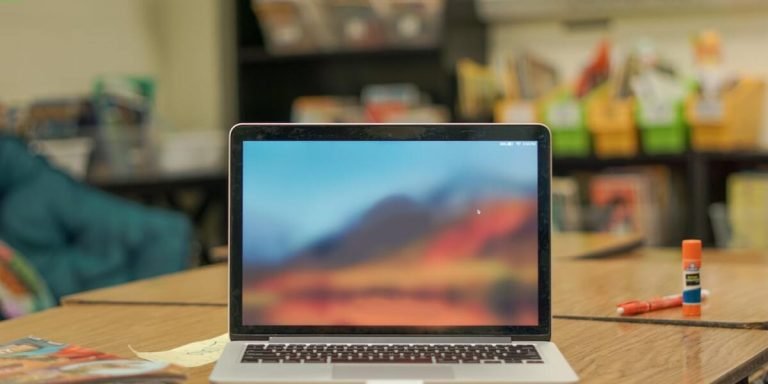Strategy Instruction: A Transformative Approach for Childhood Education
Childhood education is the foundation of a child’s learning experience, and as such, it should be both engaging and effective. One approach that has proven to transform this critical stage of educational development is “strategy instruction”. This instructional method focuses on showing students specific strategies they can use in their problem-solving efforts which ultimately fosters self-regulated learners.
The impact of strategy instruction resonates strongly within elementary school learning environments where children are still getting accustomed to the process of acquiring new knowledge independently. At this phase in their academic journey, implementing strategic methods not only enriches their understanding but also equips them with skills necessary for tackling more complex subjects later on. With its goal-oriented and student-focused framework, strategy instruction inevitably leads to advanced cognitive developments and enriched life-long learning experiences.
Did you know?
Did you know that according to a study conducted by the National Center for Education Research, students who receive strategy instruction significantly outperform their peers in multiple areas of learning? This indicates the transformative power this approach has in childhood education.
Understanding Strategy Instruction in Elementary Education
In the realm of elementary education, strategy instruction has emerged as a significant educational shift in recent years. It’s fundamentally about empowering students by teaching them how to learn effectively and efficiently. By learning various strategies, children can understand and absorb information better while also developing their problem-solving skills.
The concept behind strategy instruction revolves around providing pupils with cognitive tools they’ll need throughout their academic journey and beyond. For instance, instead of merely asking children to memorize multiplication tables, educators employing this approach might teach methods for understanding why those multiplications work as they do. This method encourages learners not just to remember but comprehend—the foundation stone of long-term retention.
With technology integration becoming more prevalent in contemporary classrooms—especially now that we’re living in an increasingly digitized 2023—it’s important for us parents and educators alike to recognize its potential role within our kids’ strategic learning process too.
Tech-based tools like interactive whiteboards or educational gaming apps can make teaching strategies more engaging while reinforcing key concepts simultaneously; hence playing a pivotal role when it comes down integrating technology into day-to-day school curriculum—a necessary progression if we aim at preparing our youngsters proficiently enough for future advancements yet unseen!
Implementing Tailored Learning Strategies for Young Students
In our dynamic world, bringing strategy instruction to the elementary classroom is crucial. It helps students improve their self-regulation skills and adapt better to learning tasks.
Firstly, let’s look at why strategy instruction matters in today’s educational landscape. Strategy instruction involves teaching specific approaches or techniques meant to aid problem-solving or enable task completion more effectively and efficiently.
To create an impact with tailored learning strategies, educators need deep insights about individual learner characteristics – namely cognitive abilities (such as memory), behavior elements (like attention spans) and factors tied up with emotion (be it motivation levels). Armed with these analytics collected via modern digital tools classrooms have now begun adopting; teachers can craft personalized lesson plans that result in improved comprehension & retention rates amongst students while also encouraging them towards being life-long independent learners.
Moreover, technology plays a major role in implementing such kind of customized education programs through interactive platforms like virtual reality headsets , artificial intelligence-based tutoring systems etc., proving once again how helpful tech integrations really could be when blended rightly into curriculums.
Another area where ‘strategy Instruction’ makes significant contributions within primary school settings would be democratic decision-making experiences provided during group study periods – giving pupils chance enhance critical thinking capacities overtime themselves .
Key Components of Effective Strategy Instruction
Effective strategy instruction in elementary education today includes key components such as:
- The integration of technology
- Techniques that are easily adaptable to various learning styles and environments
- Methods that encourage active engagement and participation from students
- Continuous assessment and feedback systems to monitor progress
1. Age-Appropriate Strategies: The strategies used should cater to the cognitive abilities and developmental level of young learners.
2. Clear Objectives: Each teaching plan needs clear objectives that align with both, state standards and curriculum goals.
3. Active Engagement: Hands-on learning keeps children engaged which maximizes comprehension and retention.
4. Scaffolding Instruction: This involves breaking down information into digestible chunks so students can make connections easier helping them progress towards their learning goal independently over time.
5.Building Meta-cognition Skills: Teaching kids how to think about thinking improves problem-solving skills significantly.
There you have it! These foundational elements help ensure your child gets most out every strategic lesson while keeping pace with technological advancements making education more fun , interactive all geared toward achieving outcomes aimed at fostering holistic development for future ready generation.
The Role of Teachers in Facilitating Strategy Instruction
Teachers serve as critical facilitators in strategy instruction, especially when it comes to incorporating technology into elementary school learning. In an era where technological advancements are at the forefront of teaching methodologies, understanding and utilizing these tools effectively is now a key element of educational strategies.
As teachers navigate the dynamic landscape of education in 2023, they must focus on integrating technology seamlessly within their instructional methods. By resorting to digital platforms for teaching foundational skills such as reading comprehension or math concepts, educators not only engage students more actively but also instill lifelong tech-savviness that extends beyond classroom walls.
Moreover, thoughtful integration can lead to learning experiences unique to each student’s needs while molding them into active problem solvers. Teachers’ role here becomes pivotal; guiding youngsters through this information-rich environment with well-planned strategic instructions ensures easier absorption and retention of knowledge. Consequently fostering independent thinkers who associate joy rather than fear with education.
Thus, making teachers essential catalysts contributing significantly towards shaping future-ready learners equipped with both basic academic prowess and advanced technical proficiency.
Techniques for Teacher-Led Strategic Skill Development
Teachers hold significant roles in molding young minds, and one of their critical duties is to facilitate strategy instruction. By integrating technology into education and focusing on elementary school learning, they can improve the strategic skill development process considerably.
No changes required.
i) Use of Interactive Games: Teachers should introduce interactive games that stimulate problem-solving skills. These digital games require children to use specific strategies to pass levels or win challenges which enhances their cognitive abilities over time.
ii) Tech-aided Assignments: Traditional paper-and-pencil assignments are becoming a thing of the past now. With tablets and laptops at hand, teachers can create exciting scenarios where students find solutions using online resources strategically showing them how useful these devices could be when used thoughtfully.
iii) Online Quizzing Systems: Platforms like Kahoot! have transformed educational testing methods. Such systems encourage kids to strategize while timing runs out adding an extra edge making it more than just another dull exam experience.
iv) Incorporation of Educational Apps: Hundreds of apps focus specifically on developing different abilities among youngsters including logic-building, decision-making etc., all formulated creatively with fun elements keeping boredom away from studies completely!
v) Virtual Reality (VR): This rich media source presents information visually rather dramatically helping students understand complex ideas easily without feeling overwhelmed or confused particularly dealing with abstract concepts found otherwise tough by some.
Monitoring and Adjusting Teaching Approaches for Optimal Learning
In today’s tech-savvy world, the value of strategy instruction in elementary school learning cannot be overstated. The process involves teachers identifying students’ strengths and weaknesses and applying tailored teaching techniques to enhance comprehension.
A significant facet of this approach is monitoring and adjusting these strategies for optimal learning outcomes. Teachers play a pivotal role here. They need to stay vigilant, assess student performance regularly, comprehend their understanding levels, and adjust their methodologies accordingly while ensuring technology integration in education.
For instance, if a teacher implements an interactive online game into mathematics or science lessons but notices that some students are struggling with it; he/she may have to simplify the activity or present information differently without disconnecting from technology use altogether.
Equally crucial is being flexible enough to recognize when changes are needed. If one form of teaching isn’t working despite earnest efforts—perhaps due to children not responding as anticipated—it might be necessary for educators (with grace) change gears quickly towards another method more conducive.
By employing varied digital tools suitable per kid’s unique needs—such as visual aids like graphs/charts on smart boards during class sessions—the educator can easily explain complex theories/ideas making them digestible even at primary level schooling.
Measuring the Impact of Strategy Instruction on Student Performance
In the realm of elementary school learning, educators are witnessing a shift in pedagogical methods brought on by technology integration. One such transformative approach centers around “strategy instruction”. As its name suggests, this teaching method focuses on equipping students with strategic tools to master and effectively apply new learnings.
The impact of strategy instruction is heavily linked to student performance due largely to how closely it reflects real-world problem-solving scenarios. With digital resources increasingly available at teachers’ disposal, they can now more conveniently embed these strategies into daily lesson plans—thereby aiding comprehension and boosting engagement levels among young learners.
To measure this impact accurately though necessitates careful analysis along multiple dimensions – from improved test scores or enhanced critical thinking abilities right down to visible upticks in class participation rates—and such data provides invaluable insights for refining future instructional techniques within educational establishments nationwide.
Tools and Methods to Assess Educational Outcomes
“Strategy instruction is a crucial component of modern education, playing an instrumental role in enhancing student performance. The integration of technology has further enhanced its effectiveness, enabling educators to measure and assess educational outcomes more accurately.
The application of strategy instruction goes beyond just teaching; it involves evaluating the effectivity of these strategies on students’ learning capabilities, especially within the context of elementary school learning. Let’s delve into some essential tools and methods for this purpose.
Online Assessment Platforms come as one innovative tool that helps carry out effective strategy instruction assessments. These platforms feature quizzes and tests designed following specific instructional strategies which can be customized by teachers based on classroom needs. They provide instant feedback while also tracking progress over time with comprehensive reports.
Digital Portfolios are another user-friendly method for assessing educational outcomes from strategy instructions. Using this tool allows students to exhibit their understanding through tasks like multimedia presentations or online project creations – providing a broader landscape than traditional paper-and-pencil examinations.
Simulation Software serves as a dynamic tool where elementary learners engage in problem-solving activities tied closely with real-world contexts under various strategic teachings’ effects – creating intimately experiential learning scenarios rather than abstract concepts from textbooks.
Interpreting Data to Inform Future Teaching Strategies
Understanding and interpreting data derived from monitoring student performance forms the core of determining successful strategy instruction. It facilitates an insightful understanding that helps educators tailor their future teaching strategies, especially within elementary school learning environments.
Today’s cutting-edge technology integrates into education to provide a compelling platform for accurately capturing and analyzing this data. Here’s how:
1. **Use Assessment Tools:** Various online platforms offer customized assessments to gauge students’ grasp on topics taught under different strategy instructions. These tools help teachers understand individual learner capabilities as well as collective class dynamics.
2. **Data Analysis Software:** In 2023, there are various educational software available that can interpret raw assessment results into useful graphs or charts; revealing patterns, growth areas and gaps in comprehension related to specific strategies employed during lessons.
3. **Monitoring Attendance & Engagement**: Digital classrooms allow tracking of attendance alongside noting student engagement levels during classes enabled through tech-integrated learning modules tied with distinct strategic instructions.
4: **Collaborative Learning Environment**: With resources like digital forums where learners interact about tasks undertaken under certain instructional strategies, valuable insights could be perceived regarding those effective at furthering peer-to-peer learning.
5: **Real-Time Feedback Mechanisms**: Technology allows instantaneous feedback collection post every interactive session or study unit associated with any particular method of providing instruction such as gamified exercises or visual demonstrations integrating key concepts.
Conclusion
In conclusion, strategy instruction presents a dynamic shift in the way we approach childhood education. Its influence extends far beyond textbook learning, leading to empowering children with problem-solving and critical thinking skills that stay relevant throughout their lifetime. As parents and educators alike, it’s our role to embrace this transformative teaching model for the holistic development of young minds.
As your journey through child-rearing or educating continues do explore “our website” further; it offers an abundance of resources designed to assist you every step along this noble path. From developing effective communication strategies with youngsters to practical tips on enhancing their overall learning experience – discover all these gems here at your convenience.







